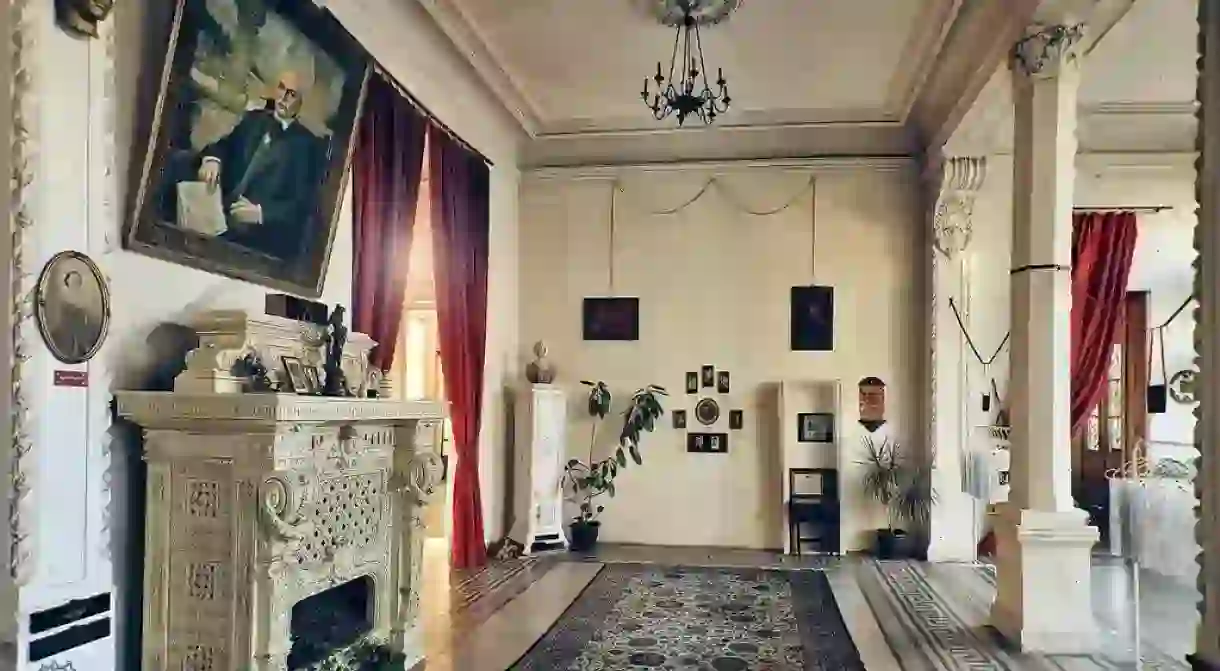The Most Beautiful Buildings in Bucharest

Bucharest has a fantastic mix of architectural styles, which together create a unique cityscape. Discover our guide to some of the most beautiful buildings in Bucharest, from old villas to hotels and the occasional palace.
Casa Costa-Foru
The Costa-Foru house is one of the latest additions to the list of Bucharest’s historic villas to open for the public. Built by the journalist son of a former Romanian prime minister, it was home to his 10 children before being passed on to their offspring. Today the house preserves its original features and still breathes the atmosphere and charm of old Bucharest, which makes it a great venue for concerts, readings by some of the most prominent Romanian writers, and more.
Casa Melik
Building, Museum
One of Bucharest’s hidden gems, 250-year-old Casa Melik is the city’s oldest house and one of the most beautiful. Built for a local nobleman whose name was lost, it was purchased by an Armenian merchant for the impressive sum of 1,400 thalers, historic documents show. Named after one of its most illustrious owners, author and 1848 revolutionary figure Iacob Melik, it hosts the Theodor Pallady Museum and is decorated with more than 800 paintings and drawings by the Romanian painter.
Spitalul Colțea
Building, Historical Landmark
Completed in 1887, Spitalul Colțea is Bucharest’s first hospital and one of the cornerstones of Romanian history of medicine. Modelled after Ospedale di S. Lazzaro e Mendicanti in Venice, it was built after the original edifice, erected in 1704, was devastated by a fire. Located in the centre of Bucharest, it hosts 17th century Colțea Church with paintings by Gheorghe Tattarescu, and together form undoubtedly one of its most important landmarks.
Domnița Bălașa
Domnița Bălașa is arguably one of the most beautiful churches in Bucharest. Built by the heir of an illustrious noble Romanian family, the sixth daughter of ruler Constantin Brâncoveanu, it boasts several unique features. Its stained glass windows, made in Germany, the paintings by Austrian artists and the Viennese chandelier are practically nonexistent in other Christian Orthodos churches. Also, remarkably, no funeral mass was ever held here. https://www.instagram.com/p/BIZd3MeAe-X/?taken-at=27602343
Centrul Ordinului Augustinian al Asumptionistilor
Building
This imposing Neo-Gothic building was built in the 1930s for the Congregation of Augustinians of the Assumption. After being seized by the Communist authorities, it was returned to the order and beautifully restored to its former glory.
Muzeul George Enescu
Museum
With its entrance covered by a Art Deco shell shaped glass, this magnificent palace built at the turn of the 10th century by former Romanian prime minister and Bucharest Mayor Gheorghe Grigore Cantacuzino by famed Romanian arhitect Ioan D. Berindei. Today it hosts the George Enescu Museum, dedicated to one of the country’s most remarkable classical music composers.
Ateneul Roman
One of Bucharest’s main architectural landmarks, The Romanian Atheneum is home to the city’s philharmonic and the main concert venue for classical music. With a richly adorned interior featuring a 75 meter long fresco inspired by Romanian history (hidden by a layer of red velvet during Communism) and a stunning ceiling, it is one of the city’s must visit buildings. https://www.instagram.com/p/BYui-K9A4yG/?tagged=ateneulroman
Palatul Kretzulescu
Building, Historical Landmark, Architectural Landmark
This stunning edifice located on the edge of Cișmigiu Gardens was built in the French Renaissance style for Elena Kretzulescu, the Paris-educated heir of two Romanian aristocratic families, by Romanian architect Petre Antonescu. A lover of plants and flowers, she had a greenhouse built in the right hand wing of the palace, as well as a two hectare park.
Hotel Cișmigiu
Hotel
After lying in a derelict state for decades upon being seized from its owners by the Communist regime, this four star hotel was recently brought back to its former glorious self. Located near the city’s oldest public park, the Cișmigiu Gardens, it is also home to a pub serving great traditional Romanian food, Berăria Gambrinus.
Muzeul de Arta Frederic and Cecilia Cuțescu-Storck
Museum

Built for Romanian sculptor Frederic Stock and Cecilia, his trailblazer of a wife – the first woman in Europe to teach art in a public art academy –, the house contains the artistic legacy of a major family of creators. Immerse yourself in this enchanted space, where walls are covered in stunning frescoes and ceilings are adorned with intricate flower and birds patterns.
Palatul Parlamentului
Not more than a concrete monster in the eyes of many, this entry is likely to raise an eyebrow. However, there is something compelling about the stark beauty of this uneasy reminder of Romania’s Communist past. The brainchild of former dictator Nicolae Ceaușescu, the Palace of Parliament features 1,100 rooms spread over twelve floors and fifteen underground levels. So big it can be seen from space, it was designed by a 28-year-old woman, architect Anca Petrescu.
The Ark
Building, Concert Hall
With its red brick facade, Bucharest’s former Stock Exchange is a remarkable example of industrial architecture. Built in 1898 by Italian architect Giulio Magni – later Rome’s chief architect – in collaboration with Romanian engineer Anghel Saligny, it miraculously survived the mass demolitions of the ‘80s. After being nearly destroyed by a fire, nature took over almost completely, before the building being rescued and turned into the vibrant cultural hub it is today.













